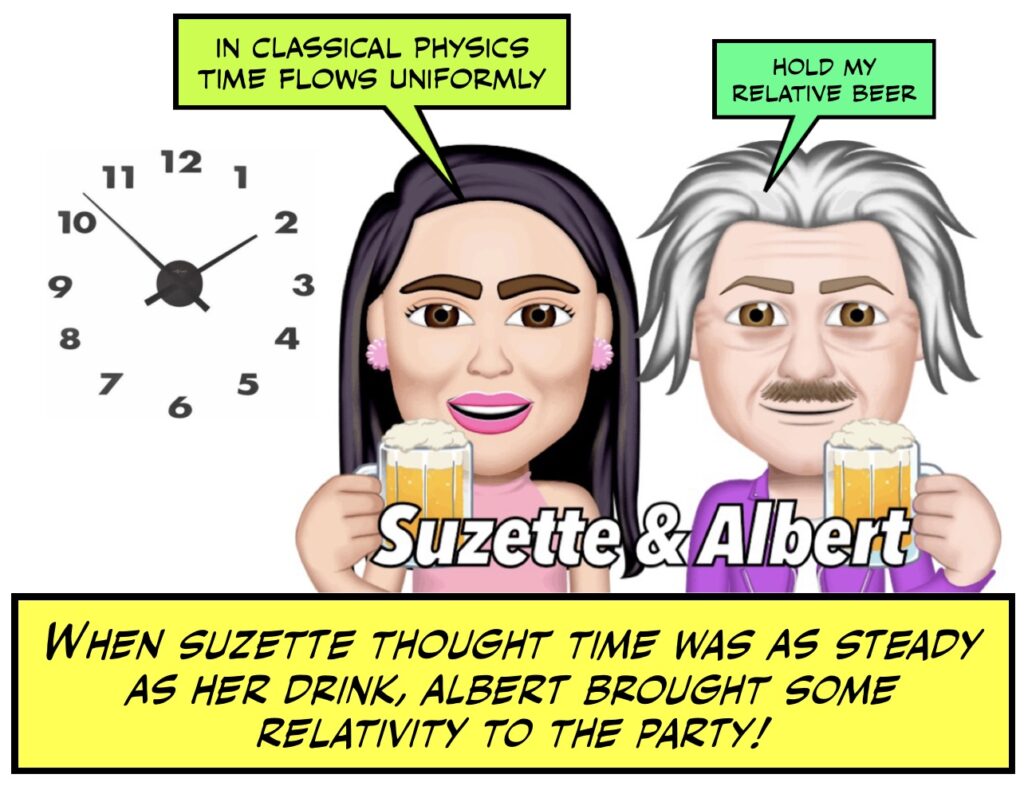
The meme humorously reflects a fundamental shift in our understanding of time in the context of physics.
1. **Clock Background**: The clock represents the traditional, classical view of time as a uniform and absolute quantity.
2. **Suzette’s Quote**: Suzette embodies the classical perspective, claiming that, in classical physics, time flows uniformly. This refers to the conventional idea of time being constant and universal.
3. **Einstein’s Entrance**: Einstein, with a mischievous expression, responds, “‘Hold my relative beer!'” This phrase humorously introduces the concept of relativity. Einstein’s theory revolutionized our understanding of time by proposing that it is not absolute but rather relative and intertwined with space.
The meme playfully illustrates the transition from the classical, straightforward notion of time to Einstein’s more dynamic and interconnected concept introduced through the theory of relativity. It uses humor and a familiar setting to make the complex physics concept more accessible and engaging.


